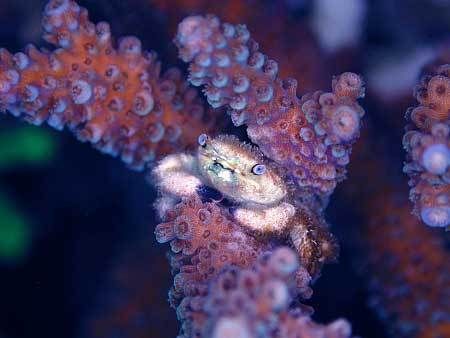Also from Dr. Ron
All crabs may be rather easily kept in reef aquaria, but they are generally not "reef-aquarium" safe. They are generally hardy, opportunistic animals that adapt well to aquarium life. Their major drawback is that, with few exceptions, they are not specific predators on any one type of animal or alga. Instead they seem to be omnivorous, eating just about anything that strikes their fancy. Most of them have a predisposition to flesh, and they will attack snails, shrimps, worms and other mobile animals more-or-less indiscriminately. Additionally, some species are common predators on corals.
Coral crabs, such as the various species that are often found nestled among the branches of some corals are often considered to be commensal, causing no lasting damage to their host other than stealing an occasional meal. Nonetheless some of these crabs seem to capable of destroying and eating coral polyps, perhaps under conditions of starvation. With these little crabs, it is probably best to decide on a case-by-case basis whether or not you wish to keep them in your system.
Most hitchhiker crabs probably should be humanely disposed of, or relegated to a tank where they may be kept without damaging other desirable animals. Under such situations many crabs make delightful pets. Their behavior and their color patterns are truly unique and interesting to observe. They are natural reef animals, but they are not necessarily good animals for a reef aquarium.






